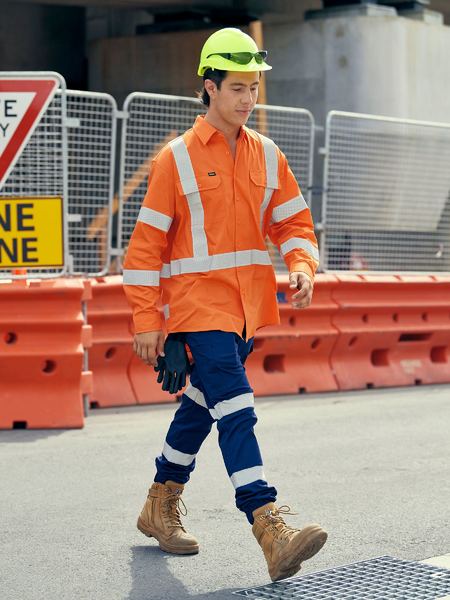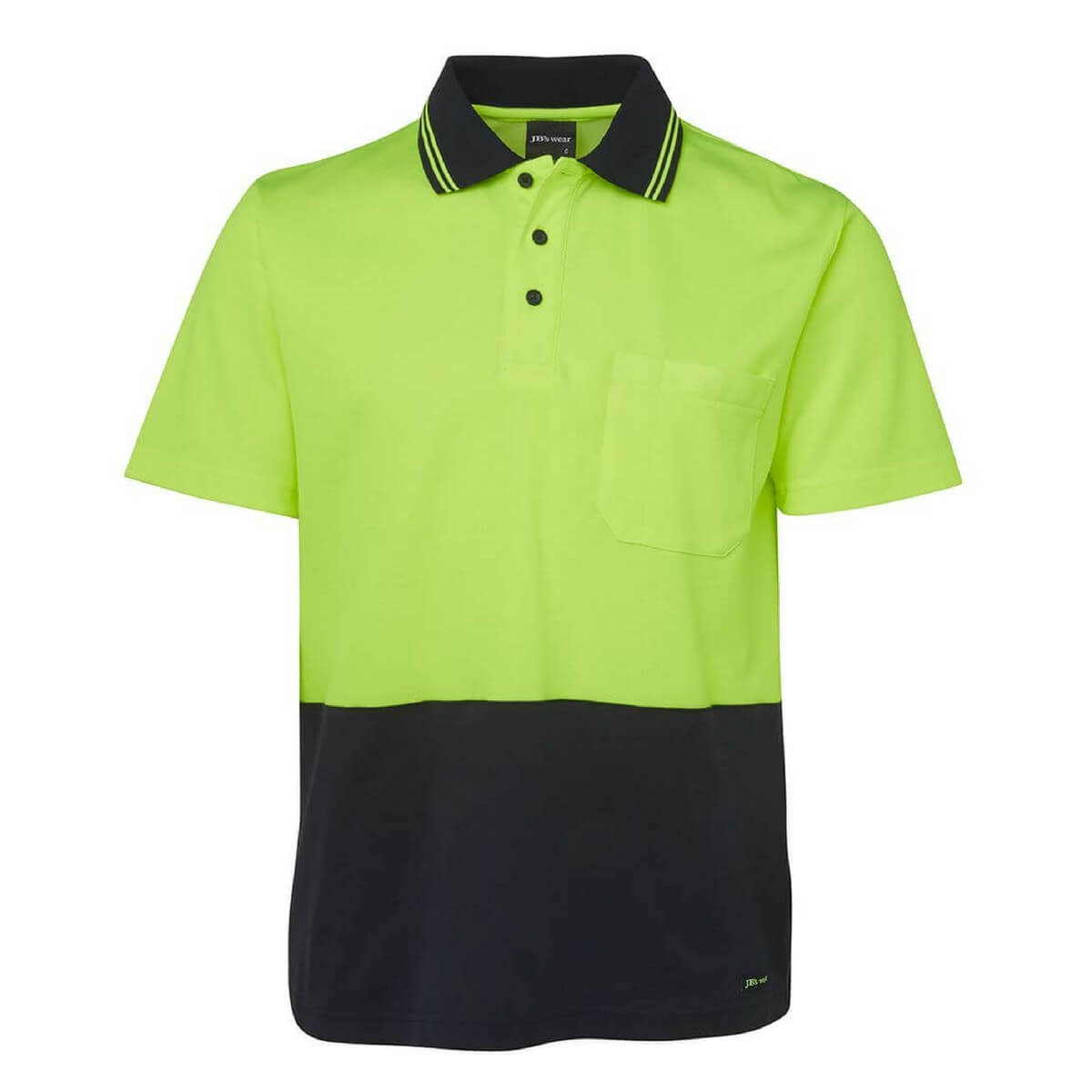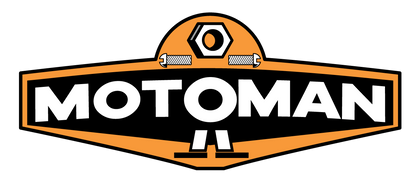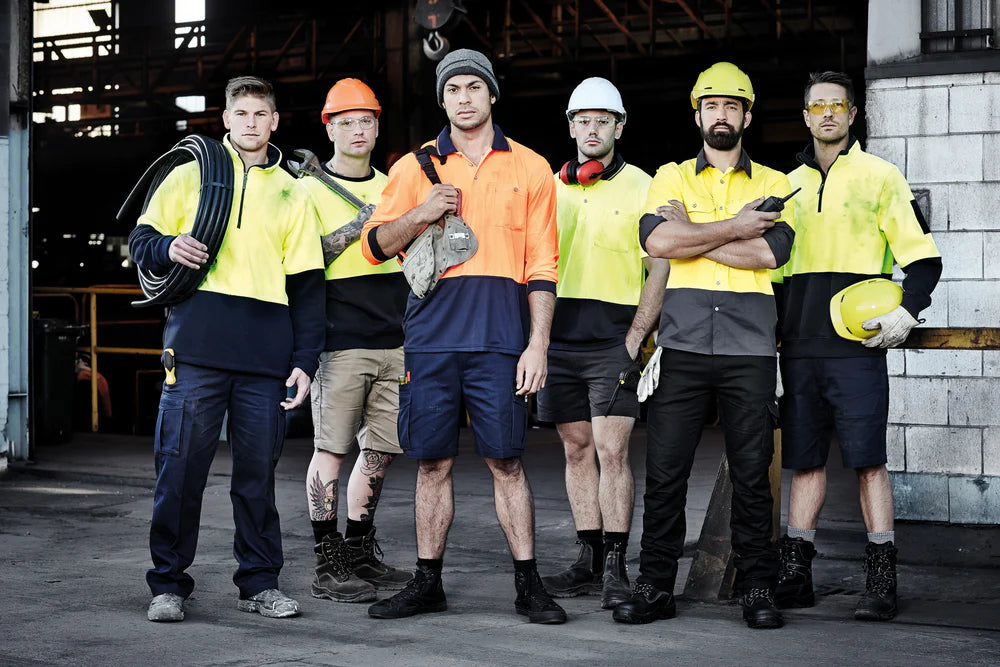
Choosing the right safety wear can be a daunting task, be it safety boots, hard hats or for that matter hi-vis clothing. A proper safety gear is very important for any industrial worker. Each PPE has its own standards depending upon what hazards it protects. Below we will try and understand an important part of any safety/PPE gear - hi-vis clothing.
WHAT IS HI-VIS?
The Standards Explained
There are a couple of main standards regarding high visibility garments.
AS/NZ 4602.1: 2011 High visibility safety garments – Garments for high risk applications
This standard specifies the design of the garments used by employees who are exposed to hazards from moving vehicles, equipment or other high-risk situations. There are different classes within the Standard for different times of day:
-
C
 lass D – These garments are designed for use in the daytime only. They provide the wearer with high visibility under daylight conditions but are generally ineffective in providing visibility in darker environments. A typical example of a Class D compliant garment is a yellow/navy polo without tape. To meet this standard the garment must:
lass D – These garments are designed for use in the daytime only. They provide the wearer with high visibility under daylight conditions but are generally ineffective in providing visibility in darker environments. A typical example of a Class D compliant garment is a yellow/navy polo without tape. To meet this standard the garment must:
- Have an approved color of hi visibility material that encircles the entire upper torso. The colors specified in the standard are Orange-red, Red, Yellow, Orange and Yellow (restricted).
- The fluorescent fabric should cover at least 0.4m2 of the upper torso.
- Logos or text printed onto the garments cannot be included in the 0.4m2. Generally, a logo that is no larger than 10cm x 10cm shouldn’t affect the compliance of the garment.
-
C
 lass N – These garments are designed to provide high visibility in the dark when viewed under retroreflected light, such as vehicle headlights. The AS/NZ 1906.4: 2010 standard discussed in the next dot point specifies which types of reflective material are compliant and the minimum number of washes they remain complaint for. To meet night compliance requirements the tape must be a minimum of 50mm wide, and is commonly in a Hoop, X back or H pattern. The color of background material used on the garment is not specified in the Standard. An example of a Class N compliant garment could be a black security jacket with reflective tape.
lass N – These garments are designed to provide high visibility in the dark when viewed under retroreflected light, such as vehicle headlights. The AS/NZ 1906.4: 2010 standard discussed in the next dot point specifies which types of reflective material are compliant and the minimum number of washes they remain complaint for. To meet night compliance requirements the tape must be a minimum of 50mm wide, and is commonly in a Hoop, X back or H pattern. The color of background material used on the garment is not specified in the Standard. An example of a Class N compliant garment could be a black security jacket with reflective tape.
-
 Class D/N – These garments meet both the day and night requirements we’ve outlined above. An example of a D/N compliant garment is a hi vis yellow polo with reflective tape.
Class D/N – These garments meet both the day and night requirements we’ve outlined above. An example of a D/N compliant garment is a hi vis yellow polo with reflective tape.
AS/NZ 1906.4: 2010 Retroreflective materials and devices for road traffic control purposes – High visibility materials for safety garments. (plus, Amendment 1; 2014)
We’ve already mentioned this standard, but it specifies the photometric, colorimetric and physical properties for the various high visibility materials. It categorizes materials into three classes:
- Class F – Fluorescent fabric for Day Use Only (hi vis yellows, oranges etc.)
- Class R – Reflective fabric for Night Use Only (i.e. 3M reflective tape). It is important to understand the impact of washing Class R materials. The washing process slowly disintegrates the reflective properties of the material. Most reflective tapes used in Australia only remain compliant for about 30 washes.
- Class RF – Both Fluorescent and Reflective fabric for Day/Night Use (the yellow reflective tape used on Vic Road’s clothing)
There is an additional classification of ‘W’ for wet compliance, which is normally only relevant for rain-wear garments.
Types of Hi-Vis Clothing



Hi-Vis clothing comes in different types-
- Hi-Vis Jackets- These are usually made from heavy-duty materials that can withstand rain and wind. They come in a variety of styles, including short and long-sleeved jackets and waterproof jackets with hoods. Often worn by tradies in outdoor and dark environments.
- Hi-Vis Vests- These are lightweight options that provide protection against the sun while staying visible to other workers. These are often worn by people who are visiting worksites, so they can just throw on a vest over whatever they’re wearing.
- Hi-Vis Pants- Mostly made from stronger, more durable materials, with either one or two stripes on both legs.
- Hi-Vis Shirts- These are the most common form of hi-vis apparel, as there are a few different types of hi-vis shirts. Some with lightweight and breathable material for tradies out in the sun all day and need that breathability during those scorching days. There are also cotton drill shirts that come with both long and short sleeves. These are made with a bit more of a thicker material, and include buttons and collars, giving the wearer a bit more options when wearing their hi-vis shirts. These shirts are also worn for sun safety as well, protecting tradies from the sun’s UV rays while staying visible to other workers.
- Hi-Vis Overalls- Hi-Vis overalls and coveralls offer the wearer an improved visual profile whilst working, conforming to Australian Standards by combining fluorescent fabric and reflective stripes. This allows workers to be seen in both daylight and in low light conditions.
Suitable Applications for High Visibility Garments
So far, we’ve covered how to ensure you purchase compliant high visibility clothing. It is also your responsibility to ensure the application of the clothing is suitable. The Standard has the following recommendations to ensure your team is using the gear correctly.
- Have company procedures and policies in place to ensure items are worn correctly and that workers understand why garments will be ineffective if not worn correctly and in the appropriate applications,
- Store garments so that fading of fluorescent material and degradation of retroreflective material due to heat are limited,
- Keep garments clean by washing/cleaning according to manufacturer’s instructions, and
- inspecting the garments on a regular basis and replacing them if badly damaged, soiled or faded. “In constant use, garments should be critically examined at 3-month to 6-month intervals.”
It is important to understand the high visibility properties any garment will lessen over time as it fades, stretches and is washed. Following the four recommendations above will ensure you replace your staff’s uniform regularly enough to keep them seen and safe!
Hi-vis clothing is one of the main staples of workwear. Be it yellow or orange, a rain jacket, or a pair of cuffed pants, hi-vis will keep tradies safe and visible in almost all lighting situations. Motoman Industrial Wear keeps an extensive range of hi-vis clothing and offers FREE SHIPPING on orders above $99. You Can also visit us instore at 769, Pacific Highway, Chatswood. We are just 300m away from Chatswood Station.




